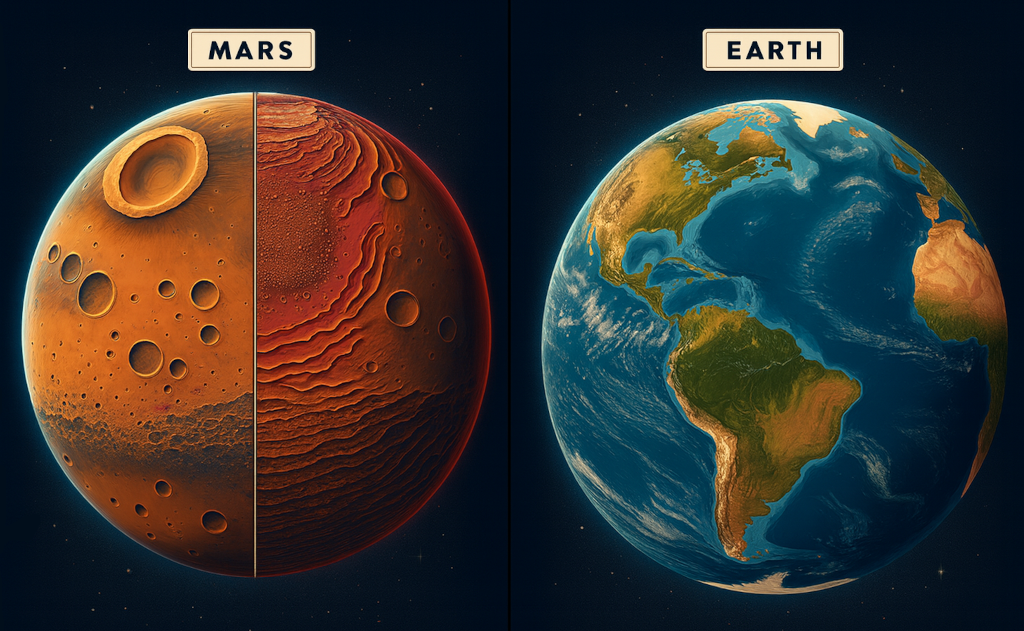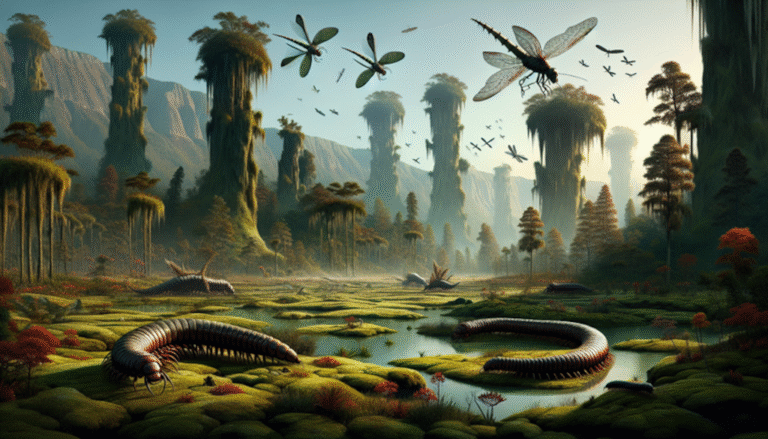Ever looked at a map of Mars and wondered why you can still spot massive, ancient craters—millions of years old—etched into its surface? Meanwhile, Earth, despite being equally battered by cosmic collisions, hides its scars like a magician’s disappearing act.
Turns out, there’s a fascinating story behind why Mars preserves its ancient impact basins, while Earth erases them with almost surgical precision. And it has everything to do with geology, tectonics, and, surprisingly, a dead planet’s core.
Buried over time or erased forever? Earth vs. Mars
Let’s start with the basics: an impact basin is a giant crater left behind when an asteroid or comet slams into a planet. Think of it as a planetary bruise—except these bruises can stretch hundreds or even thousands of kilometers wide.
Now here’s the plot twist: while both Mars and Earth have been hit by their fair share of cosmic missiles, the way each planet handles the aftermath couldn’t be more different.
Why Earth doesn’t keep cosmic souvenirs
Earth is like the ultimate DIY renovator. Between plate tectonics, erosion, weather patterns, and volcanic activity, it’s always on the move, breaking, shifting, and resurfacing its crust like a restless artist.
As a result, most of Earth’s ancient basins are gone. Obliterated. Covered up. Recycled. In fact, out of the hundreds we suspect once existed, only a handful remain even partially visible today:
- The Chicxulub crater in Mexico — famously linked to the extinction of the dinosaurs.
- The Sudbury Basin in Canada — one of Earth’s oldest known impact structures, dated around 1.85 billion years ago.
Both of these are hard to spot without deep imaging tools. Why? Because Earth’s geological engine doesn’t quit. Take plate tectonics, for example. Continents drift, collide, and destroy impact features over time, sometimes within just a few hundred million years.
Meanwhile, on Mars… the scars stay
Mars tells a very different story. With no active plate tectonics and minimal erosion (thanks to its thin atmosphere and lack of liquid water), many of its oldest craters are still more or less where we’d expect them to be — even if they’re somewhat buried or muted by time.
Famous examples include:
- Hellas Basin — more than 2,000 kilometers wide and over 7 km deep.
- Utopia Planitia — the largest recognized impact basin in the solar system.
- Isidis and Argyre — smaller, but noticeably round and geologically influential.
Many experts believe that even more ancient basins exist, particularly in Mars’s northern lowlands. But here’s the catch—they’re hidden, cloaked by layers of volcanic lava or sediment deposited over billions of years. Surface imaging alone won’t cut it. Scientists rely on gravity data, magnetometry, and 3D subsurface mapping—technologies used by missions like NASA’s InSight and Mars Global Surveyor—to confirm their presence.
The magnetic mystery of Martian basins
Interestingly, many Martian impact basins show weak or no magnetic signal at all. That’s in stark contrast to Earth, where strong magnetic anomalies often help us detect ancient craters buried beneath rock and soil.
Why the difference? Mars’s core lost its magnetic dynamo early in its history, likely over 4 billion years ago. Without a global magnetic field, new lava flows on Mars don’t “record” magnetism the way Earth’s crust does. This has become a subtle but powerful clue in locating fossilized impact sites.
So why does this matter?
Understanding how impact basins survive or vanish tells us not just about past collisions, but about how each planet works on the inside. The preservation of Martian basins reveals a crust that’s ancient and largely frozen in place—ideal for studying early solar system history. On Earth, similar structures may be hidden so well, we’ll never find them all.
Bottom line? If you’re looking for one of the most honest records of cosmic violence, Mars has the receipts. Earth, meanwhile, hit “delete” long ago — its dynamic geology both a blessing and a curse for planetary historians.
Your next cosmic mystery
So here’s a thought to leave with: if Mars can hold onto such ancient scars for billions of years, what else might be buried beneath its rust-colored surface? Could those forgotten basins hide the evidence of early life—or the ingredients that made it possible?
One thing’s for sure: the Red Planet isn’t done telling its story yet.




Leave a Comment